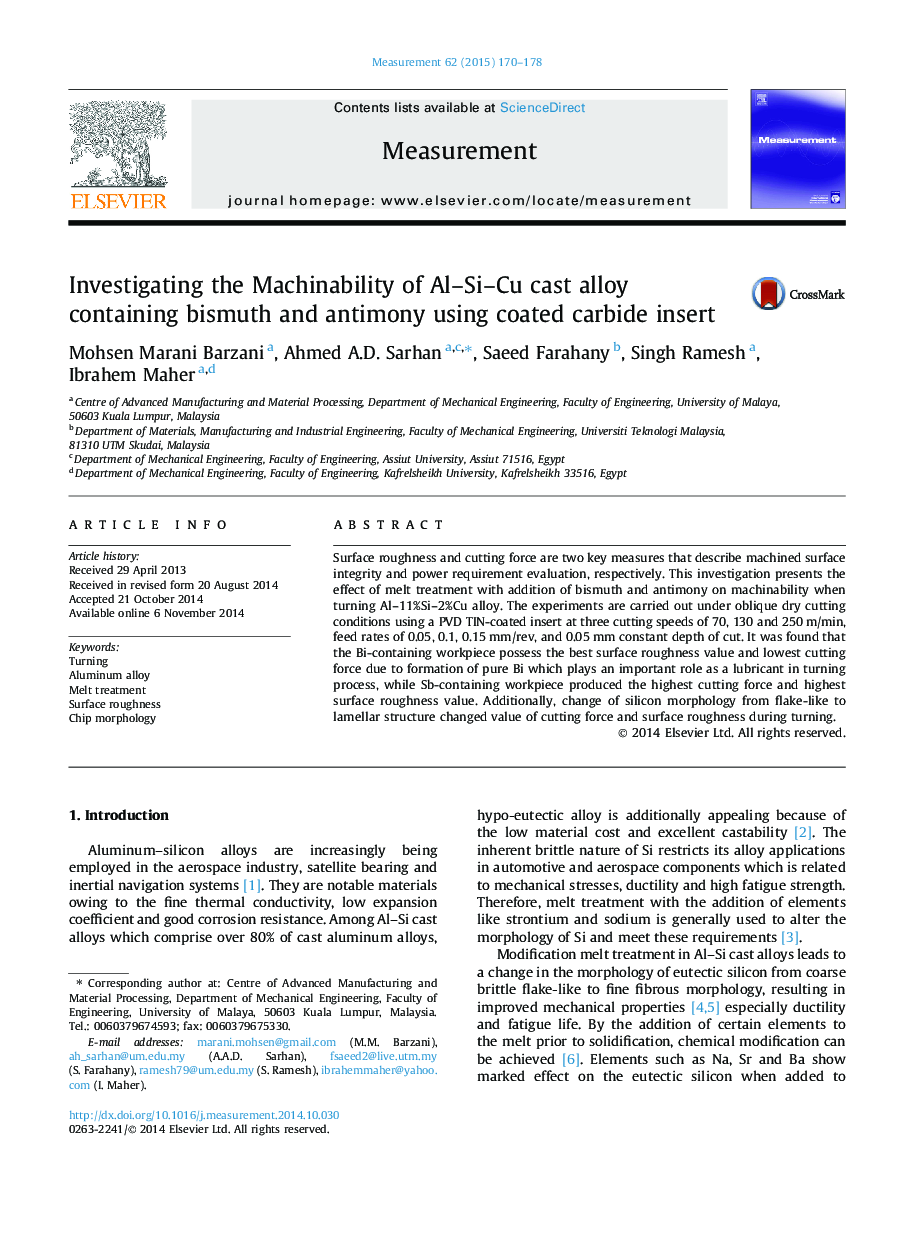| Article ID | Journal | Published Year | Pages | File Type |
|---|---|---|---|---|
| 731143 | Measurement | 2015 | 9 Pages |
•Change of silicon shape decreased machinability of Al–12Si–2Cu cast alloy.•Bismuth addition improves machinability of Al–12Si–2Cu cast alloy.•Antimony addition increases surface roughness by adding amount of BUE.
Surface roughness and cutting force are two key measures that describe machined surface integrity and power requirement evaluation, respectively. This investigation presents the effect of melt treatment with addition of bismuth and antimony on machinability when turning Al–11%Si–2%Cu alloy. The experiments are carried out under oblique dry cutting conditions using a PVD TIN-coated insert at three cutting speeds of 70, 130 and 250 m/min, feed rates of 0.05, 0.1, 0.15 mm/rev, and 0.05 mm constant depth of cut. It was found that the Bi-containing workpiece possess the best surface roughness value and lowest cutting force due to formation of pure Bi which plays an important role as a lubricant in turning process, while Sb-containing workpiece produced the highest cutting force and highest surface roughness value. Additionally, change of silicon morphology from flake-like to lamellar structure changed value of cutting force and surface roughness during turning.
